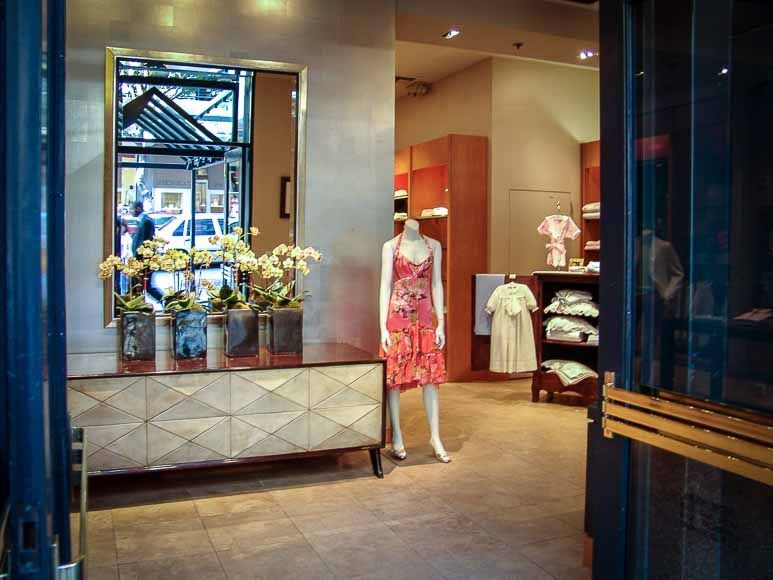Wilkes Bashford

Wilkes Bashford

CASE STUDY:
WILKES BASHFORD
In early 2009, Wilkes Bashford, the iconic San Francisco based luxury, was facing bankruptcy and liquidation. The company had incurred major debt and was experiencing negative cash flow since the opening a large new store in Carmel , and in 2008 the financial crisis and recession hit the luxury sector hard, with sales decreasing over 40 percent.
By February 2009, the Company had payables averaging over a year old, the vendor community had cut off all shipments, the company’s credit facility was fully drawn down and the company was in violation of its bank covenants.
The lender was insisting that a financial advisor be brought in to evaluate operations and Mr. Appel was retained by the Board for this assignment. In 2 weeks he analyzed operations, and prepared a report for the Board evaluating the company’s operations and prospects, with recommendations on how to reduce expenses, stabilize operations and gain credibility with the bank and vendor community. The Board named Mr. Appel Interim CEO, and gave him full authority over day to day operations and all financial decisions. He was charged with formulating a new strategic business plan which the lender had requested as a condition to continuing to support the business. Within a week’s time, he presented the Plan to the Board, met with the lender, received their support and proceeded to implement the new plan. Wilkes Bashford , the founder and former CEO, was to work with Mr. Appel on merchandising , marketing planning and customer relations, and the excellent working relationship that he forged with Wilkes was key to preserving morale within the company and credibility with the customers.
With no additional availability from the existing credit facility and no new merchandise, the company was rapidly running out of cash .Mr. Appel discovered millions of dollars of sale merchandise from previous seasons that was sitting in the distribution center. He immediately distributed this merchandise to the 4 retail stores and advertized an extension of the semi-annual warehouse sale, which provided needed cash to fund operations until an agreement could be made with the vendor community to resume shipments. The business plan was presented to the vendors and factors at a meeting in early April. The vendors agreed to the company’s proposal of a standstill in paying them for old receivables for an additional 12 months. They agreed to resume shipping on terms of 50% payment up front, payments weekly based on sales, and a true up at the end of 6 months. This agreement plus the proceeds from the warehouse sale provided fresh merchandise to jump start sales, and the needed runway to raise additional capital needed to fun operations for the fourth quarter.
An investment banker was engaged to raise capital that Spring and was unsuccessful. Efforts to raise capital from the existing owners, the major vendors as well as from high net worth customers were also unsuccessful. Mr. Appel then decided to reach out directly to the only logical buyer remaining, the Mitchell Family of Westport , Connecticut, who operated a highly successful specialty store chain whose vendor structure and customer profile was quite similar to that Wilkes Bashford. Mr. Appel had to convince the family to purchase an operation on the West Coast during the worst recession that ever confronted luxury retail but was able to prevail. He was able to arrange a sale of the company’s assets to Mitchell’s though a 363 sale in a Chapter 11 proceeding in late November 2009. In order for the sale to be consummated, the Carmel store was closed, and leases for both the flagship Sutter Street store and the Palo Alto location were renegotiated on much more favorable terms to the buyer.
Substantially all the store personnel were retained, and the Mitchells have successfully integrated Wilkes Bashford into the Mitchell family of stores. Both stores have been extensively renovated and the Wilkes Bashford business has recovered and prospered under the Mitchell ownership.

CASE STUDY:
WILKES BASHFORD
In early 2009, Wilkes Bashford, the iconic San Francisco based luxury, was facing bankruptcy and liquidation. The company had incurred major debt and was experiencing negative cash flow since the opening a large new store in Carmel , and in 2008 the financial crisis and recession hit the luxury sector hard, with sales decreasing over 40 percent.
By February 2009, the Company had payables averaging over a year old, the vendor community had cut off all shipments, the company’s credit facility was fully drawn down and the company was in violation of its bank covenants.
The lender was insisting that a financial advisor be brought in to evaluate operations and Mr. Appel was retained by the Board for this assignment. In 2 weeks he analyzed operations, and prepared a report for the Board evaluating the company’s operations and prospects, with recommendations on how to reduce expenses, stabilize operations and gain credibility with the bank and vendor community. The Board named Mr. Appel Interim CEO, and gave him full authority over day to day operations and all financial decisions. He was charged with formulating a new strategic business plan which the lender had requested as a condition to continuing to support the business. Within a week’s time, he presented the Plan to the Board, met with the lender, received their support and proceeded to implement the new plan. Wilkes Bashford , the founder and former CEO, was to work with Mr. Appel on merchandising , marketing planning and customer relations, and the excellent working relationship that he forged with Wilkes was key to preserving morale within the company and credibility with the customers.
With no additional availability from the existing credit facility and no new merchandise, the company was rapidly running out of cash .Mr. Appel discovered millions of dollars of sale merchandise from previous seasons that was sitting in the distribution center. He immediately distributed this merchandise to the 4 retail stores and advertized an extension of the semi-annual warehouse sale, which provided needed cash to fund operations until an agreement could be made with the vendor community to resume shipments. The business plan was presented to the vendors and factors at a meeting in early April. The vendors agreed to the company’s proposal of a standstill in paying them for old receivables for an additional 12 months. They agreed to resume shipping on terms of 50% payment up front, payments weekly based on sales, and a true up at the end of 6 months. This agreement plus the proceeds from the warehouse sale provided fresh merchandise to jump start sales, and the needed runway to raise additional capital needed to fun operations for the fourth quarter.
An investment banker was engaged to raise capital that Spring and was unsuccessful. Efforts to raise capital from the existing owners, the major vendors as well as from high net worth customers were also unsuccessful. Mr. Appel then decided to reach out directly to the only logical buyer remaining, the Mitchell Family of Westport , Connecticut, who operated a highly successful specialty store chain whose vendor structure and customer profile was quite similar to that Wilkes Bashford. Mr. Appel had to convince the family to purchase an operation on the West Coast during the worst recession that ever confronted luxury retail but was able to prevail. He was able to arrange a sale of the company’s assets to Mitchell’s though a 363 sale in a Chapter 11 proceeding in late November 2009. In order for the sale to be consummated, the Carmel store was closed, and leases for both the flagship Sutter Street store and the Palo Alto location were renegotiated on much more favorable terms to the buyer.
Substantially all the store personnel were retained, and the Mitchells have successfully integrated Wilkes Bashford into the Mitchell family of stores. Both stores have been extensively renovated and the Wilkes Bashford business has recovered and prospered under the Mitchell ownership.

CASE STUDY: WILKES BASHFORD
In early 2009, Wilkes Bashford, the iconic San Francisco based luxury, was facing bankruptcy and liquidation. The company had incurred major debt and was experiencing negative cash flow since the opening a large new store in Carmel , and in 2008 the financial crisis and recession hit the luxury sector hard, with sales decreasing over 40 percent.
By February 2009, the Company had payables averaging over a year old, the vendor community had cut off all shipments, the company’s credit facility was fully drawn down and the company was in violation of its bank covenants.
The lender was insisting that a financial advisor be brought in to evaluate operations and Mr. Appel was retained by the Board for this assignment. In 2 weeks he analyzed operations, and prepared a report for the Board evaluating the company’s operations and prospects, with recommendations on how to reduce expenses, stabilize operations and gain credibility with the bank and vendor community. The Board named Mr. Appel Interim CEO, and gave him full authority over day to day operations and all financial decisions. He was charged with formulating a new strategic business plan which the lender had requested as a condition to continuing to support the business. Within a week’s time, he presented the Plan to the Board, met with the lender, received their support and proceeded to implement the new plan. Wilkes Bashford , the founder and former CEO, was to work with Mr. Appel on merchandising , marketing planning and customer relations, and the excellent working relationship that he forged with Wilkes was key to preserving morale within the company and credibility with the customers.
With no additional availability from the existing credit facility and no new merchandise, the company was rapidly running out of cash .Mr. Appel discovered millions of dollars of sale merchandise from previous seasons that was sitting in the distribution center. He immediately distributed this merchandise to the 4 retail stores and advertized an extension of the semi-annual warehouse sale, which provided needed cash to fund operations until an agreement could be made with the vendor community to resume shipments. The business plan was presented to the vendors and factors at a meeting in early April. The vendors agreed to the company’s proposal of a standstill in paying them for old receivables for an additional 12 months. They agreed to resume shipping on terms of 50% payment up front, payments weekly based on sales, and a true up at the end of 6 months. This agreement plus the proceeds from the warehouse sale provided fresh merchandise to jump start sales, and the needed runway to raise additional capital needed to fun operations for the fourth quarter.
An investment banker was engaged to raise capital that Spring and was unsuccessful. Efforts to raise capital from the existing owners, the major vendors as well as from high net worth customers were also unsuccessful. Mr. Appel then decided to reach out directly to the only logical buyer remaining, the Mitchell Family of Westport , Connecticut, who operated a highly successful specialty store chain whose vendor structure and customer profile was quite similar to that Wilkes Bashford. Mr. Appel had to convince the family to purchase an operation on the West Coast during the worst recession that ever confronted luxury retail but was able to prevail. He was able to arrange a sale of the company’s assets to Mitchell’s though a 363 sale in a Chapter 11 proceeding in late November 2009. In order for the sale to be consummated, the Carmel store was closed, and leases for both the flagship Sutter Street store and the Palo Alto location were renegotiated on much more favorable terms to the buyer.
Substantially all the store personnel were retained, and the Mitchells have successfully integrated Wilkes Bashford into the Mitchell family of stores. Both stores have been extensively renovated and the Wilkes Bashford business has recovered and prospered under the Mitchell ownership.


